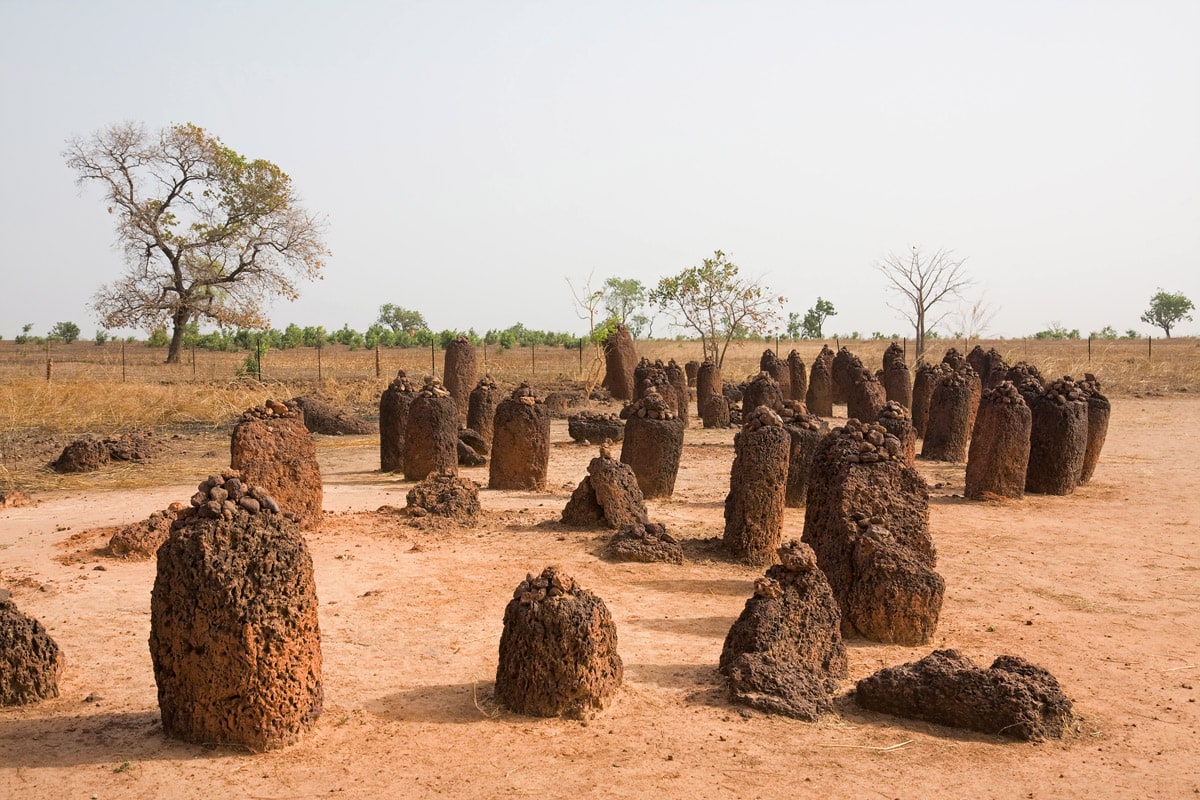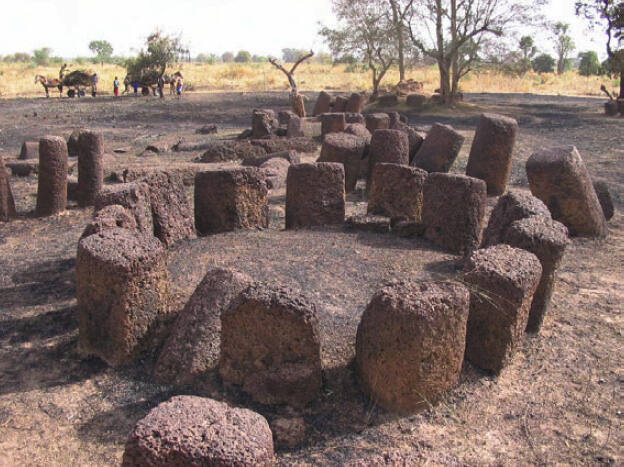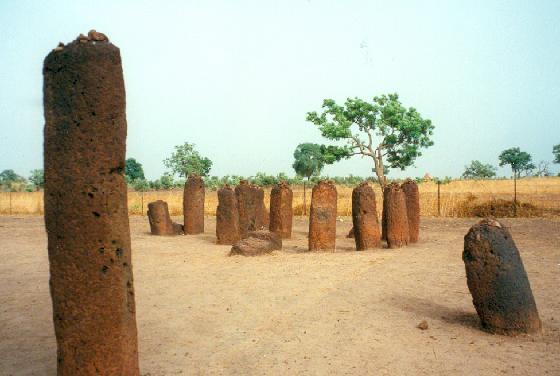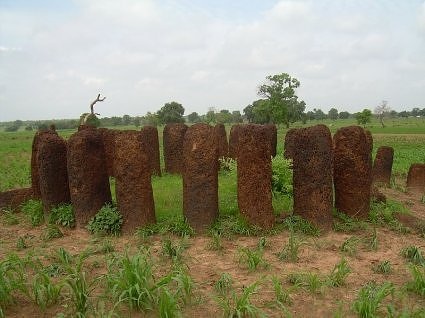The Sengambian Stone Circles

The Senegambia stone circles are four large groups of megalithic circles located in the extreme western part of West Africa, between the River Gambia and the River Senegal.
There are four sites in total: Wassu and Kerbatch in Gambia, and Wanar and Sine Ngayene in Senegal.
They represent an extraordinary concentration of more than 1,000 stone circles and tumuli spread over a territory of 100 km wide and 350 km in length, along the River Gambia.
Together, the four groups consist of 93 stone circles, some of which have been excavated.

These four megalithic sites are a UNESCO World Heritage Site, representing a traditional monumental megalithic construction spread out over a vast area, with more than 1,000 stone circles scattered by the side of one of the major rivers of Africa.
The Sine Ngayene complex in Senegal is the largest site in the area.
It consists of 52 circles of standing stones, including one double circle. In total, there are 1102 carved stones on the site.
The Wanar complex, also in Senegal, consists of 21 circles including one double circle. The site contains 9 ‘lyre’ stones or bifid stones, sometimes with a cross piece strung between the two halves.

The Wassu complex consists of 11 circles and their associated frontal stones. This site has the highest stones in the area.
The Kerbatch complex consists of 9 circles, including a double circle. The site possesses a ‘bifid’ stone, the only known one in the area.

The stones forming the circles were skilfully shaped into almost identical pillars, either cylindrical or polygonal, on average around 2 m in height and weighing up to 7 tons.
Each circle contains between eight to fourteen standing stones having a diameter of four to six meters.
The four megalithic sites inscribed bear witness to a prosperous and highly organized society with traditions of stone circle constructions, associated with burials, and persisting in certain areas over more than a millennium.
From the UNESCO website:
“The integrity of the four components of the site can only be evaluated as part of a much wider unified cultural complex. The complexes conserve their integrity in terms of spatial associations of the component circles, individual megaliths, and tumuli. The spiritual beliefs associated to the stones by local communities help to protect their integrity.”
